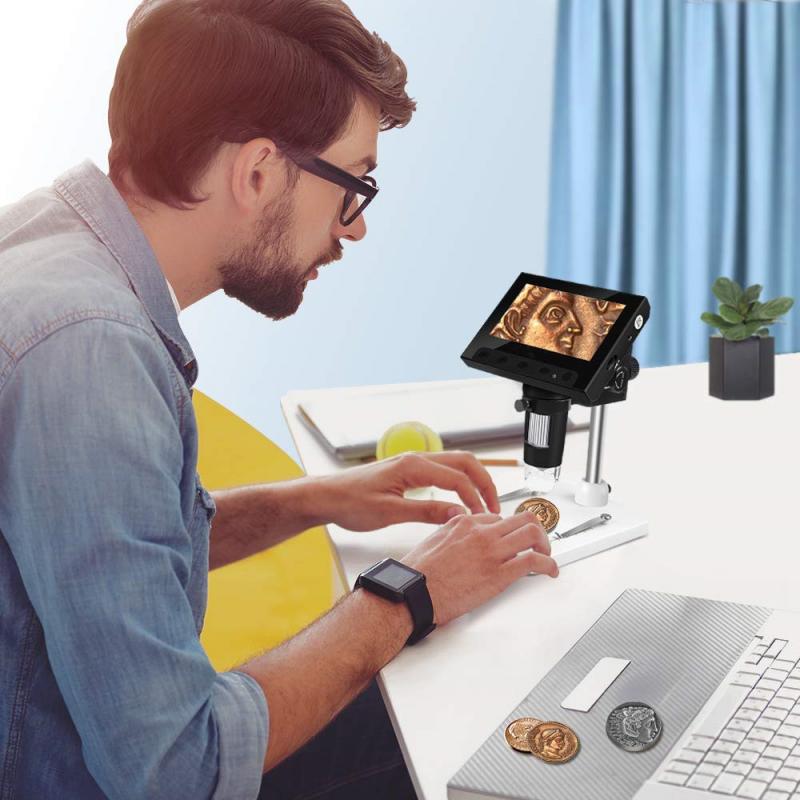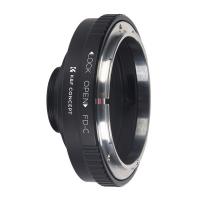How Does A Microscope Help In Diagnosing Diseases ?
A microscope helps in diagnosing diseases by allowing medical professionals to examine samples of bodily fluids, tissues, and cells at a microscopic level. This enables them to identify any abnormalities or signs of disease that may not be visible to the naked eye. For example, a blood sample can be examined under a microscope to identify the presence of abnormal cells or bacteria that may indicate an infection or disease. Similarly, a tissue sample can be examined to identify cancerous cells or other abnormalities that may indicate a disease. Microscopes can also be used to examine samples of bodily fluids such as urine or sputum to identify the presence of bacteria or other pathogens that may be causing an infection. Overall, the use of microscopes in medical diagnosis allows for more accurate and precise identification of diseases, which can lead to more effective treatment and better patient outcomes.
1、 Microscopic examination of tissue samples
A microscope is an essential tool in diagnosing diseases as it allows for the examination of tissue samples at a microscopic level. Microscopic examination of tissue samples can reveal the presence of abnormal cells, bacteria, viruses, or other pathogens that may be causing the disease. This information is critical in determining the appropriate treatment for the patient.
In recent years, advances in microscopy technology have led to the development of new techniques that can provide even more detailed information about tissue samples. For example, confocal microscopy allows for the examination of tissue samples in three dimensions, providing a more complete picture of the tissue structure and the presence of any abnormalities. Additionally, fluorescence microscopy can be used to visualize specific molecules or structures within the tissue sample, allowing for the identification of specific pathogens or abnormalities.
Microscopy is also used in the diagnosis of infectious diseases. For example, a microscope can be used to examine a blood sample for the presence of malaria parasites or to examine a sputum sample for the presence of tuberculosis bacteria. In some cases, microscopy can even be used to identify the specific strain of a pathogen, which can be important in determining the most effective treatment.
In conclusion, a microscope is an essential tool in diagnosing diseases as it allows for the examination of tissue samples at a microscopic level. Advances in microscopy technology have led to the development of new techniques that can provide even more detailed information about tissue samples, and microscopy is also used in the diagnosis of infectious diseases.

2、 Detection of microorganisms in body fluids
A microscope is an essential tool in diagnosing diseases as it allows for the detection of microorganisms in body fluids. Microorganisms such as bacteria, viruses, and fungi are too small to be seen with the naked eye, but with the use of a microscope, they can be visualized and identified.
In medical laboratories, microscopes are used to examine samples of blood, urine, and other bodily fluids for the presence of microorganisms. By examining the morphology and characteristics of these microorganisms, doctors and medical professionals can diagnose the type of infection and determine the appropriate treatment.
In recent years, advances in microscopy technology have led to the development of more sophisticated imaging techniques such as fluorescence microscopy and confocal microscopy. These techniques allow for the visualization of specific molecules and structures within cells, providing a more detailed understanding of the mechanisms of disease.
Furthermore, the use of digital microscopy and artificial intelligence has enabled the automation of diagnostic processes, reducing the time and cost required for diagnosis. This has been particularly useful in developing countries where access to medical facilities and trained personnel is limited.
In conclusion, the microscope is an indispensable tool in the diagnosis of diseases, allowing for the detection and identification of microorganisms in body fluids. Advances in microscopy technology have led to more sophisticated imaging techniques and automation of diagnostic processes, improving the accuracy and efficiency of disease diagnosis.

3、 Identification of abnormal cells in blood smears
A microscope is an essential tool in diagnosing diseases, especially those that involve the examination of cells and tissues. One of the primary ways in which a microscope helps in diagnosing diseases is by identifying abnormal cells in blood smears. Blood smears are prepared by placing a drop of blood on a glass slide, spreading it out, and staining it with special dyes. The slide is then examined under a microscope to identify any abnormal cells.
Abnormal cells in blood smears can indicate a range of diseases, including infections, cancers, and blood disorders. For example, the presence of abnormal white blood cells can indicate leukemia, while abnormal red blood cells can indicate anemia or sickle cell disease. By identifying these abnormal cells, doctors can make a more accurate diagnosis and develop an appropriate treatment plan.
In recent years, advances in microscopy technology have further improved the accuracy and speed of disease diagnosis. For example, digital microscopes can capture high-resolution images of cells and tissues, which can be analyzed using computer algorithms to identify abnormalities. This approach, known as digital pathology, has the potential to revolutionize disease diagnosis by enabling faster and more accurate analysis of large volumes of data.
In conclusion, a microscope is a critical tool in diagnosing diseases, particularly those that involve the examination of cells and tissues. By identifying abnormal cells in blood smears, doctors can make a more accurate diagnosis and develop an appropriate treatment plan. With the latest advances in microscopy technology, the accuracy and speed of disease diagnosis are continually improving, leading to better patient outcomes.

4、 Visualization of cellular structures and organelles
A microscope is an essential tool in the diagnosis of diseases. It allows for the visualization of cellular structures and organelles, which can provide valuable information about the health of a patient. By examining cells and tissues under a microscope, doctors and pathologists can identify abnormalities that may indicate the presence of a disease.
For example, a microscope can be used to examine blood cells for signs of infection or disease. It can also be used to examine tissue samples from organs such as the liver, lungs, or skin to look for signs of cancer or other diseases. In addition, a microscope can be used to examine bacteria and viruses, which can help in the diagnosis of infectious diseases.
The latest point of view on the use of microscopes in disease diagnosis is the development of advanced imaging techniques. These techniques, such as confocal microscopy and super-resolution microscopy, allow for even greater visualization of cellular structures and organelles. This can provide more detailed information about the health of a patient and help doctors make more accurate diagnoses.
In conclusion, a microscope is a crucial tool in the diagnosis of diseases. It allows for the visualization of cellular structures and organelles, which can provide valuable information about the health of a patient. With the development of advanced imaging techniques, the use of microscopes in disease diagnosis is becoming even more important and effective.






























